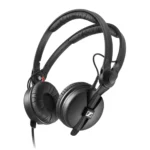Sennheiser Fake, Sennheiser is one of the most trusted and renowned brands in the world of audio equipment. From high-quality headphones to top-tier microphones, the German company has earned a stellar reputation for delivering exceptional sound performance. However, as the popularity of Sennheiser products continues to grow, so does the number of counterfeit or “fake” items in the market. This article aims to help consumers identify Sennheiser fake products and ensure they’re investing in genuine audio gear.
Why Fake Sennheiser Products Are a Concern
Buying counterfeit audio gear can have several drawbacks. Fake Sennheiser products may not only lack the high-quality sound performance that the brand is known for but also be poorly built and unsafe to use. Some counterfeit items may also not offer essential features like noise cancellation, sound clarity, or comfort, leading to a disappointing experience.
Moreover, counterfeit products often don’t come with a proper warranty, leaving you without support if something goes wrong with the product. This is why it’s crucial to learn how to spot a fake Sennheiser product before making a purchase.
1. Examine the Packaging
One of the first indicators of a fake Sennheiser product is poor or suspicious packaging. Sennheiser is known for its premium and well-designed packaging, which is clean, professional, and sturdy. Fake products often come in flimsy boxes with blurry logos or printing errors.
- Logo Quality: The Sennheiser logo should be crisp, clear, and properly aligned. Counterfeit items may have logos that are misprinted, faded, or blurry.
- Text and Labels: Look for typos or incorrect fonts. Sennheiser uses high-quality, clear text, and counterfeit boxes often have inconsistencies in wording.
2. Check the Build Quality
Sennheiser’s products are known for their durable and well-constructed design. When holding or wearing a Sennheiser product, it should feel substantial and well-balanced.
- Material: Genuine Sennheiser headphones or earphones usually have a premium finish, whether it’s metal, high-grade plastic, or leather. Fake versions might feel lighter, flimsy, or made from cheaper materials.
- Weight: Counterfeit products tend to feel lighter due to the use of lower-quality components and plastics. Genuine Sennheiser headphones or microphones are heavier due to their high-quality build.
3. Serial Numbers and Authentication
Sennheiser products come with a unique serial number that can be used to verify their authenticity. This number is typically found on the product itself and sometimes on the packaging.
- Serial Number: Check the serial number on Sennheiser’s official website or contact customer service to confirm if the product is authentic. A counterfeit item may not have a serial number or feature a fake one that cannot be verified.
- Warranty: Genuine Sennheiser products come with a warranty that is registered using the serial number. Fake products will not have a valid warranty, so it’s wise to verify it through the brand’s customer support before purchasing.
4. Price Point
If a deal looks too good to be true, it probably is. Sennheiser is a premium brand, and their products come at a certain price point. If you find a Sennheiser product being sold for significantly less than the typical market price, there’s a high chance it could be a counterfeit.
- Discounts: Be cautious of sellers offering large discounts on Sennheiser products, especially on websites that are not well-established or reputable.
- Third-Party Sellers: Always try to purchase from authorized Sennheiser retailers or well-known, trusted sellers. Buying from questionable websites or unknown sellers increases the likelihood of encountering fake products.
5. Audio Quality
A Sennheiser product’s audio quality is one of its most defining features. The sound produced by fake headphones or earphones is often subpar, lacking the clarity, depth, and balance expected from a genuine Sennheiser product.
- Sound Distortion: Counterfeit headphones tend to have distortion, muffled sound, or lack clarity in the bass, midrange, and treble.
- Noise Cancellation: Fake models may fail to provide proper noise-canceling effects or may have poor sound isolation compared to the real Sennheiser models.
6. Purchase from Authorized Dealers
The best way to avoid buying a fake Sennheiser product is to purchase directly from an authorized Sennheiser dealer or from Sennheiser’s official website. Authorized retailers ensure that you are buying genuine products with a valid warranty.
- Sennheiser Website: Always prefer purchasing directly from Sennheiser’s official website, as this guarantees the authenticity of the product.
- Authorized Resellers: If you’re buying from third-party sellers, ensure they are officially authorized by Sennheiser. You can find a list of authorized resellers on Sennheiser’s website.
Conclusion
When it comes to investing in high-quality audio equipment, Sennheiser stands out as a brand synonymous with performance and durability. However, with the rise of counterfeit goods, consumers must stay vigilant when purchasing audio gear. By paying attention to packaging, build quality, serial numbers, price, and sound performance, you can easily spot a fake Sennheiser product and avoid wasting money on subpar knock-offs.
Remember, when in doubt, always buy from trusted and authorized sources to ensure that you’re getting the real deal and enjoying the best audio experience that Sennheiser has to offer.
You Might Also Like These:
how to reset boat rockerz 450 pro












No Comment! Be the first one.